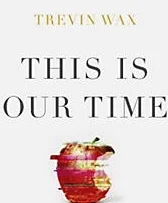An Apologetics Book for Teens
Rebecca McLaughlin’s recent book, 10 Questions Every Teen Should Ask (and Answer) about Christianity, is the sort of volume that deserves to be put into the hands of many young Christians and soon.
McLaughlin is riffing on her first book, Confronting Christianity, which poses a slightly different set of questions for an older audience. But this new book is pitched at young people who are being flooded with more questions than answers about the historic Christian faith.
In a world that is rewarding deconstruction of the faith and rejection of Christian orthodoxy and orthopraxy, McLaughlin stands firm in her belief that Christianity has good answers to any culture’s questions and tackles some of the big-ticket challenges of the modern age. She explains that Christianity has demonstrable health benefits, that it is (contrary to popular myth) the most diverse religious movement in history. She argues that Christianity does indeed require rejecting relativism and that evangelism is demanded, but that should be recognized as a good thing. McLaughlin goes on to wrestle with morality apart from God, exploring the ways that modern conceptions of “good” are often derived from Christian ideals. Then she provides arguments for the reliability of Scripture and follows that by making the case that science has not, as commonly thought, disproved Christianity. So far these are just standard apologetic arguments. In the next two chapters, McLaughlin goes on to make the case for natural marriage and for a historic understanding of human sex. In both chapters she acknowledges the difficulty of same-sex attraction (as a same-sex attracted woman who is married to a man) and intersex individuals. This is no table-pounding denial of the complexity or emotional difficulty of the present issues, but is a compassionate wrestling with sexual ethics and the witness of Scripture. McLaughlin remains faithful to orthodox Christianity, but presents it in terms that are less repugnant than its opponents often make it. The book concludes with chapters on the problem of pain (or evil) and the defensibility of eternal judgment and reward.
There is little innovative about the content McLaughlin presents, but this little volume presents important, challenging information in a winsome way. The book is written openly and honestly without being condescending. The hard questions culture is asking are acknowledged. The fact that Christianity stands in stark contrast to the prevailing notions of the day is recognized. The goodness of the enduring truth of the gospel remains central and a deep concern for maintaining the faith once and for all delivered to the saints is revealed. McLaughlin makes the case that being true to Christianity is worth it.
The usefulness of this book is that McLaughlin has transposed important apologetic arguments from the halls of the atheist/Christian debates and put it in language and terms that are absorbable for the average teen. McLaughlin uses illustrations from Harry Potter, Lord of the Rings, and a variety of Disney animated movies. She does this as someone who has obviously watched and enjoyed them, so they don’t come across as misplaced tinsel, but actually support the content of the book. This is a book that reads well without sacrificing the quality of the arguments.
10 Questions Every Teen Should Ask (and Answer) about Christianity does not answer every question as fully as it could be, but it provides good arguments against common cultural defeaters that can help Christian teens feel confidence in their beliefs and help curious teens understand that there is more to the historic Christian faith than the cardboard cutouts that are often depicted in popular media.
Some parents might question why this book is for teens and not for those younger. Depending on the social situation and reading level of a given child, this may be an appropriate book for those at 10 and 11 years old. It’s not a difficult read, but it isn’t lightweight either. And the book wrestles with sexual topics (discreetly) that some parents may not feel appropriate, especially for younger children. Given the age that public schools are presenting their sexual content, this will certainly be mild for many children. For parents with questions, I would recommend previewing the content (an intro chapter by the author provides some insight), but this is best suited for teens.
In any case, this is a book that deserves to be distributed widely. Youth pastors should stock the volume as a resource. Parents should sneak it on their child’s shelf or backpack. Pastors should have a few copies available to help those wrestling with hard questions. This is the sort of book that would be even better when a faithful adult reads it along side a teen who is being asked and perhaps asking some of these difficult questions. It is unlikely to get easier to be a faithful Christian, but this volume at least explains why it is reasonable and worthwhile to hold fast to the faith.




























There’s no reason to doubt that Jesus was nailed to the cross. Ultimately, I trust what Scripture says about Jesus’s crucifixion because I also trust what it says about his resurrection. And that’s what we should be celebrating this week.